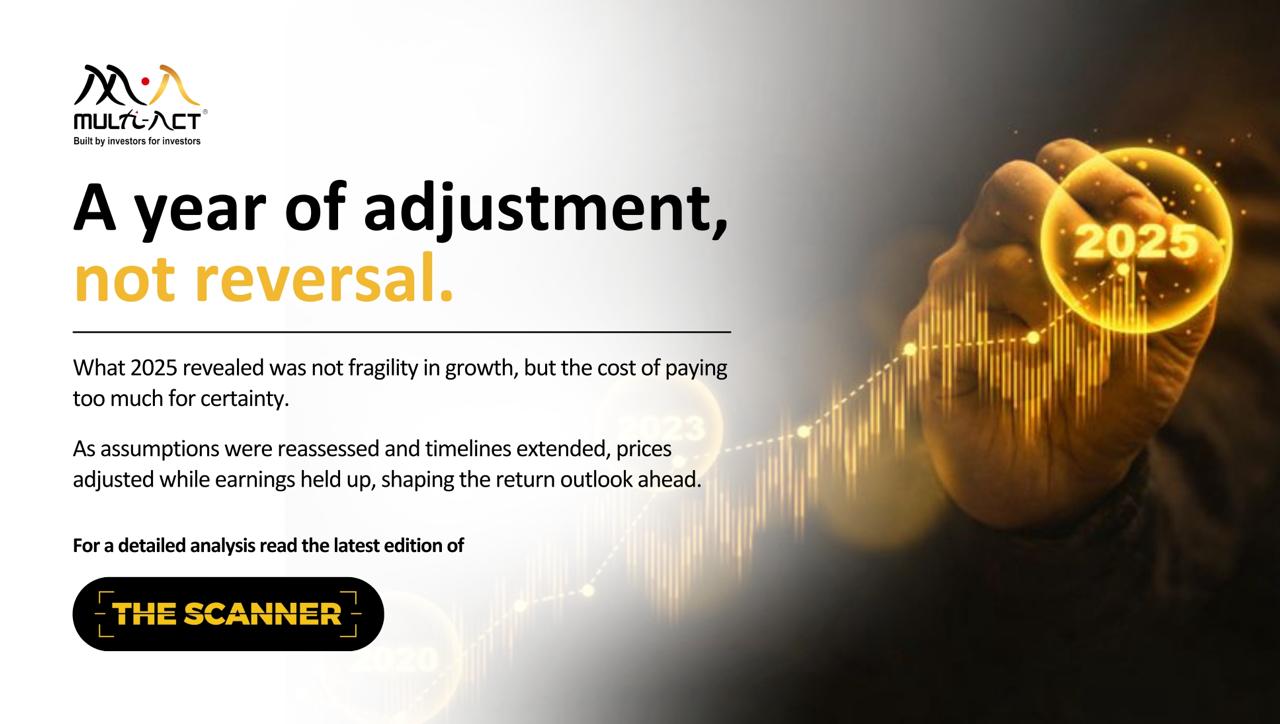
What Happened and What’s in Store for 2026
2025 did not challenge growth. It challenged assumptions. As expectations moved ahead of actual delivery, prices adjusted … Continued
Read more16 July 2014

In 2011, Warren Buffett overcame his inherent mistrust of the IT (information technology) sector to invest heavily in International Business Machines (IBM). Mr Buffett might have given IBM his vote of confidence (Berkshire Hathway owns $12.5 billion of IBM stock), but a quality of earnings analysis (QoEA) of this tech mammoth (1999-2011) does not inspire such trust.
While the recent drop in IBM’s profitability can be attributed to the disappearing technology centric moats (emergence of cloud computing is a threat to the traditional software/data storage in large on-site computers, which are the mainstay of IBM), there are red flags buried in IBM’s accounting statements from as far back as 1999.
The biggest issues have been around the manufacturer’s margins. The company has been clubbing non-recurring, unsustainable gains against the operating SGA (selling, general and administrative) expenses. At least in one instance, it has failed to report it. In 1999, the company buried $2.1 billion gain on the sale of Global Network, against SGA.
Other issues that have impacted IBM’s earning quality are related to the aggressive pension accounting assumptions it employed for the given period. These assumptions can seriously affect the reported earnings (of a company). Historically, IBM seems to have padded its earnings (from 1994-2010) on the higher expected ROA assumption; higher the assumption, less is the employer’s (in this case IBM’s) contribution to it. The average expected ROA was shown as 9% while the actual average ROA came to be 4% for the same period.
After factoring in this difference, the adjusted OP margin (TABLE 1) is much less than the one actually reported.

For example, in the year 2000, the pension plan return on asset (ROA) assumption increased from 9.5% to 10%. This contributed $221 million to earnings before income tax (EBIT).
There are other risks pertaining to the pension plans. These are, in effect, future promises and obligations, which may not be fully funded or fully recognized or are funded in way that exposes the company to risk i.e. aggressive equity allocation.
For example, at the end of year 2008, there was a significant leverage of equity assets in IBM’s pension plan assets (nearly 155% of the net worth). This introduced market risk or leverage against the net worth. During the 2008 recession when asset prices decreased across the board, the net worth took 52% hit from pension plan asset loss. This was a mark to market risk.
As far as cash flow or funding risk is concerned, though the liability was fully recognized later, there was higher cash flow (CF) funding risk if market prices decline.

The company does show improvement in gross profit margin (GPM) for seven years since 2004. During the same period, actual pension plan expense had increased.
Though, IBM claimed the improvement was due to:
Improved business segment mix towards higher margin/value segments Productivity and cost management Since 2008, the defined benefit pension expense for the company declined (even though there was underfunding) and the service cost component of the US Plans became nil, which again raises a red flag. This change, is not explained anywhere (only mentioned as a passing reference, as part of plan redesign).
The cash flow did not support the accrual accounting profit margins. Later, an improvement in free cash flow (FCF) margin in 2009 (TABLE 3) provided some backing for it.

IBM managed to score a clean M-score for the period under consideration (for 1994-2011).
The M-Score is a mathematical model, developed by Beneish Messod, which uses company’s financial ratios to help determine whether there is a manipulation in its earnings. Companies that score a value greater than -2.22 are more likely to be earnings manipulators.
The company had a good M-score because it did not consider off-balance sheet, classification or clubbing issues.
TABLE 4 below shows how the company has possibly done some window-dressing of its financial statements. The highlighted numbers in the tables below show the years and the heads where company ratios needed adjustment as per our analysis. Hence the real M-score for the company would not pass muster in any year within the period.

Mr Buffett, who believes in long term investing, seems to have put both his faith and money in IBM. The company has yet to vindicate his decision. IBM has been not been performing well; this can be seen clearly in its recent financials, even the ones not adjusted for any possible financial manipulation. The year-on-year growth (in TABLE 6) has shown a steep decline in the past two financial years while revenues too have reduced. The working capital has increased for 2013 even as revenue has decreased.
TABLE 5 shows how The company’s operating profit (OP) margin, Return on Equity (ROE) and ROA had deteriorated significantly from 2012 to 2013.

Mr. Buffett’s confidence notwithstanding, the current financials when coupled with the past history of active income manipulation, does not seem to bode well for the investors (present and future) of this company.
BOTTOM LINE:
IBM is a traditional blue chip, but it has resorted to less than optimal reporting in the past and has not passed the rigours of our QoE analysis. The change of technology has caught up with it. Unless the company improves its reporting quality and operational approach, it is not an attractive long-term investment, no matter what Mr. Buffett says.

2025 did not challenge growth. It challenged assumptions. As expectations moved ahead of actual delivery, prices adjusted … Continued
Read more
Macro numbers alone rarely tell the full story. When jobs, consumption, credit, and inflation are considered together, … Continued
Read more
The AI story everyone sees is technological. The story that a few notice is financial. Revolving expenditures, … Continued
Read moreReceive monthly updates by signing up to our newsletter.
|
Sr. No. |
Received from |
Pending at the end of last month |
Received |
Resolved* |
Total Pending # |
Pending complaints > 3 months |
Average Resolution time^ (in days) |
|
1 |
Directly from Investors |
0 |
0 |
0 |
0 |
0 |
0 |
|
2 |
SEBI (SCORES) |
0 |
0 |
0 |
0 |
0 |
0 |
|
3 |
Other Sources (if any) |
0 |
0 |
0 |
0 |
0 |
0 |
|
|
Grand Total |
0 |
0 |
0 |
0 |
0 |
0 |
Number of complaints received during month against the IA due to impersonation by some other entity:
Note: In case of any complaints received against the IA due to impersonation of the IA by some other entity, the IA may adjust the number of such complaints from total number of received/resolved complaints while preparing the above table. Further, IA must close such impersonation related complaints after following the due process as specified by SEBI/ IAASB.
* Inclusive of complaints of previous months resolved in the current month.
# Inclusive of complaints pending as on the last day of the month
^ Average Resolution time is the sum total of time taken to resolve each complaint in days, in the current month divided by total number of complaints resolved in the current month.
|
Sr. No. |
Month |
Carried forward from previous month |
Received |
Resolved* |
Pending# |
|
1 |
April, 2025 |
0 |
0 |
0 |
0 |
|
2 |
May, 2025 |
0 |
0 |
0 |
0 |
|
3 |
June, 2025 |
0 |
0 |
0 |
0 |
|
4 |
July, 2025 |
0 |
0 |
0 |
0 |
|
5 |
August, 2025 |
0 |
0 |
0 |
0 |
|
6 |
September, 2025 |
0 |
0 |
0 |
0 |
|
7 |
October, 2025 |
0 |
0 |
0 |
0 |
|
8 |
November, 2025 |
0 |
0 |
0 |
0 |
|
|
Grand Total |
0 |
0 |
0 |
0 |
*Inclusive of complaints of previous months resolved in the current month. #Inclusive of complaints pending as on the last day of the month.
|
SN |
Year |
Carried forward from previous year |
Received |
Resolved* |
Pending# |
|
1 |
2021-22 |
0 |
0 |
0 |
0 |
|
2 |
2022-23 |
0 |
0 |
0 |
0 |
|
3 |
2023-24 |
0 |
0 |
0 |
0 |
|
4 |
2024-25 |
0 |
0 |
0 |
0 |
|
|
Grand Total |
0 |
0 |
0 |
0 |
*Inclusive of complaints of previous years resolved in the current year. #Inclusive of complaints pending as on the last day of the year.